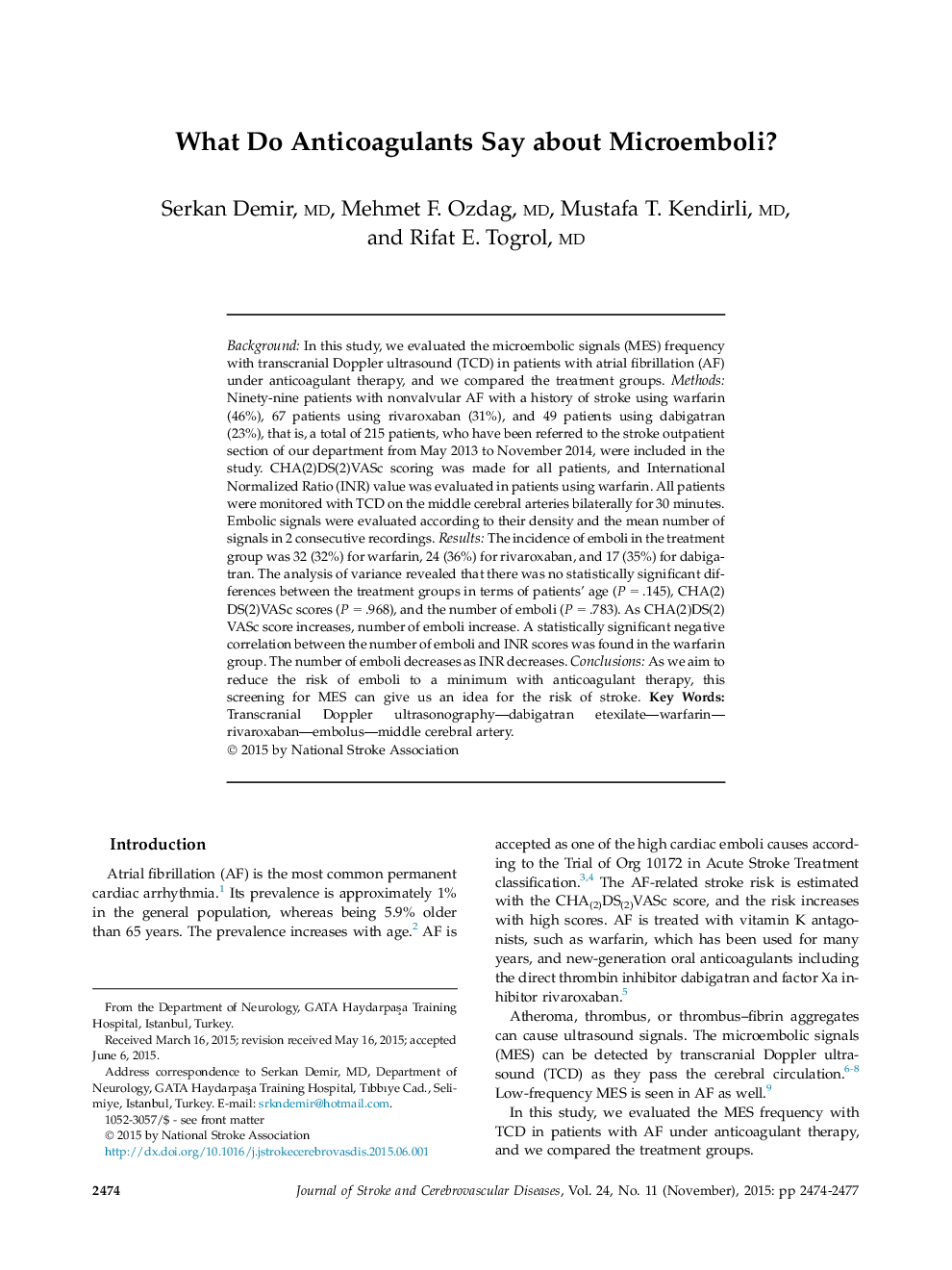| Article ID | Journal | Published Year | Pages | File Type |
|---|---|---|---|---|
| 2702414 | Journal of Stroke and Cerebrovascular Diseases | 2015 | 4 Pages |
BackgroundIn this study, we evaluated the microembolic signals (MES) frequency with transcranial Doppler ultrasound (TCD) in patients with atrial fibrillation (AF) under anticoagulant therapy, and we compared the treatment groups.MethodsNinety-nine patients with nonvalvular AF with a history of stroke using warfarin (46%), 67 patients using rivaroxaban (31%), and 49 patients using dabigatran (23%), that is, a total of 215 patients, who have been referred to the stroke outpatient section of our department from May 2013 to November 2014, were included in the study. CHA(2)DS(2)VASc scoring was made for all patients, and International Normalized Ratio (INR) value was evaluated in patients using warfarin. All patients were monitored with TCD on the middle cerebral arteries bilaterally for 30 minutes. Embolic signals were evaluated according to their density and the mean number of signals in 2 consecutive recordings.ResultsThe incidence of emboli in the treatment group was 32 (32%) for warfarin, 24 (36%) for rivaroxaban, and 17 (35%) for dabigatran. The analysis of variance revealed that there was no statistically significant differences between the treatment groups in terms of patients' age (P = .145), CHA(2)DS(2)VASc scores (P = .968), and the number of emboli (P = .783). As CHA(2)DS(2)VASc score increases, number of emboli increase. A statistically significant negative correlation between the number of emboli and INR scores was found in the warfarin group. The number of emboli decreases as INR decreases.ConclusionsAs we aim to reduce the risk of emboli to a minimum with anticoagulant therapy, this screening for MES can give us an idea for the risk of stroke.
